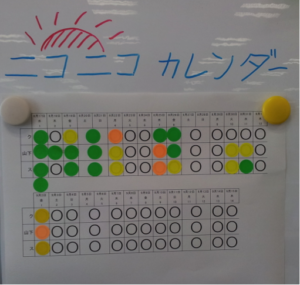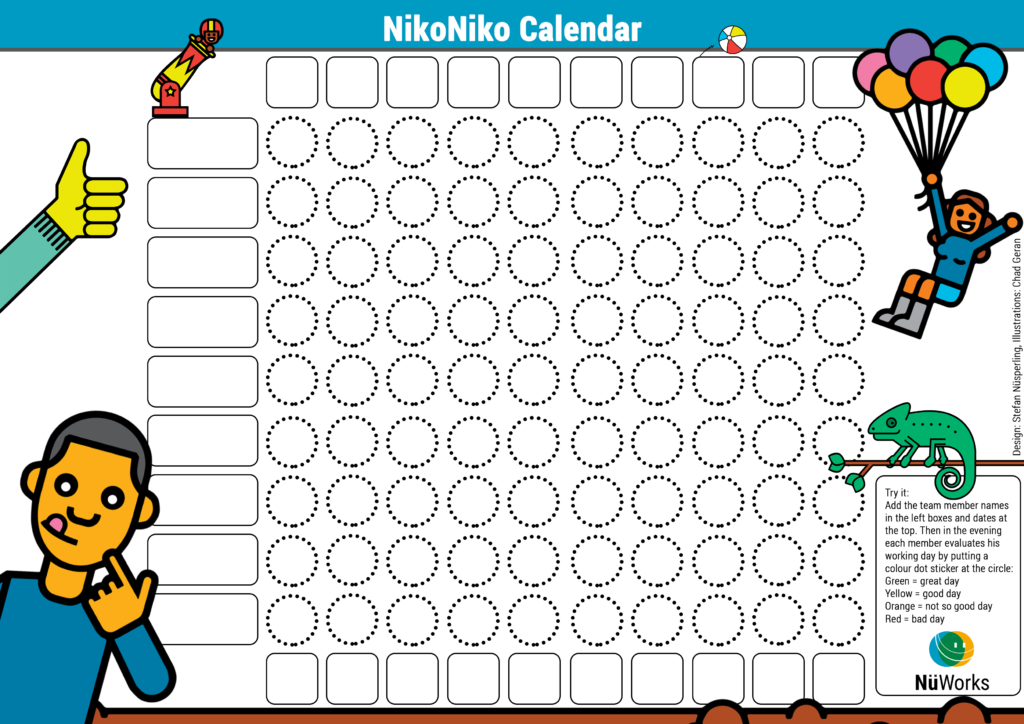by Management 3.0 Facilitator Stefan Nüsperling
“The primary focus of any manager should be to energize people,” emphasizes Jurgen Appelo in his book Management 3.0: Leading Agile Developers, Developing Agile Leaders. One way to energize people is to stimulate interaction between individuals at the team level. But it is not always easy to have smooth communication within a team when everybody is busy and working on his or her own tasks.

A beautiful way I discovered to help break down the forcefield of low communication among Japanese teams is the Niko-Niko Calendar. It’s a daily practice where each team member evaluates your working day, giving feedback to your teammates about it.
Niko-Niko (ニコニコ) is a Japanese term which means “with a smile”. I saw the calendar the first time at a company visit at the Tokyo based company VAL. They are using a Niko-Niko Calendar everyday and they have a record of several months. Amazing!
The usage of the Niko-Niko Calendar is pretty easy.
You need the following:
- Download the Niko-Niko Calendar template and print it or create your own unique one.
- Write the team members’ names in the horizontal boxes to the left and the calendar days of your working week in the boxes across the top.
- Put the calendar somewhere visible, for example on your task board.
- Buy at least one set of colored dot stickers (red, orange, yellow, green) for each team member.
How to use the Niko-Niko Calendar

At the end of a working day the team gathers together. Each team member reviews quickly the day on an individual basis and decides if it was a good day or not so good day. Secretly each person selects a rating from the stickers:
- Green = It was an awesome day
- Yellow = It was a good day
- Orange = It was a not so good day
- Red = It was a bad day
In my version, I’ve left out a middle rating because I believe it would be the majority of choices and the significance of a middle rating is low.


Great and useful template, thank you !
Excellent practice!!!
I love this template. Thanks a lot!
What are the blank boxes for below?
It turns out to be a super interesting tool that helps motivate teams.